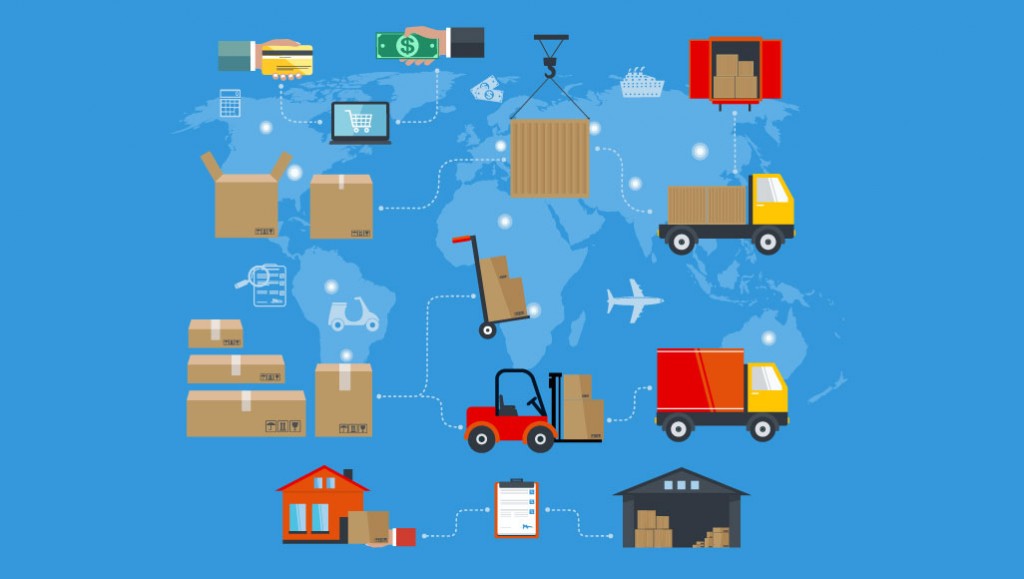
In today’s fast-paced, highly competitive, and ever-changing global economic environment, it is now more important that you are taking a proactive approach to your supply chain, as opposed to one that is reactive with transactional logistics.
Though certain reactive approaches in limited conditions may be appropriate, managing your global supply chain as a whole with the proactive approach will optimize your system. A proactive approach will allow you to more quickly and effectively approach changes to supply in demand, rather than addressing them after the fact.
If you are ready to make lasting positive change for your company, read on for our advice on transitioning into a proactive supply chain.
Collect data.
Many people often believe they can manage their supply chains only with intuition. While a strong sense of intuition is not a necessarily a problem – and certainly, a positive starting point for effective management – the vast system of the modern global supply chain is simply too complex to monitor with intuition alone.
By collecting data from various areas of your supply chain, you can more effectively manage your system and respond to unanticipated changes before they become major problems for the company.
Analyze the entire supply chain.
When making decisions based on collected data, it is crucial that you are analyzing information from the entire supply chain – not only the area you directly manage.
Knowing what is going on at your factories in overseas and overstates, who is coordinating freight shipments and the like are crucial to maintaining a proactive supply chain. By analyzing your supply chain as a whole, you can identify and strengthen the weakest links in the system to increase efficiency.
Connect electronically.
By keeping necessary parties in contact with each other and establishing pre-set alerts for certain circumstances, vital information can be accessed by the appropriate people. This means that when an issue comes up in a responsible party’s area of oversight, it is immediately brought to the party’s attention, where it can be immediately addressed and monitored.
Anticipate issues.
The people who run the smoothest-running supply chains are those who understand that there is no such thing as a flawless supply chain. It is inevitable that issues will prevent themselves at some point or another, so instead, they acknowledge this and create plans of actions to more quickly and easily deal with situations when they arise.
Again, establishing pre-set, early warning alerts is one of the most effective ways to deal with issues as they arise. Having a color code – green, yellow, red – for varying severities and coordinating procedures to go along with them will help employees who are notified identify and attack issues before the company is in a position of vulnerability.
Set up alternative plans.
Strong supply chains are also run with the concept in mind that the first approach to a problem may not be successful. When Plan A does not work, there is a Plan B, a Plan C and a Plan D in place, ready to be implemented.
These alternate plans keep your supply chain from falling into the reactive state, so that you can tackle arising issues before they become problems.
Manage with exceptions in mind.
Strong managers will also do their work knowing their will need to be certain exceptions for certain situations.
If employees are supposed to make decisions on unanticipated or complicated issues on a case-by-case basis, your supply chain will become less efficient and riddled with flaws. By having protocols for common exceptions, your employees can quickly take action and keep the supply chain running smoothly.
Consider locations.
A commonly overlooked risk for a global supply chain is having two vital sourcing locations close in proximity. In the case of a natural disaster, the loss of multiple critical suppliers could be fatal for a company.
When establishing a new branch of your supply chain, consider its location and the risks and benefits involved.
Know your critical suppliers.
Determine who your critical suppliers are and where they are located, and know their various strengths and risks. Base these decisions not on top spend or threats, but on the amount of revenue at risk, should the supplier be disrupted.
Furthermore, in the case that these suppliers are disrupted, have plans in place for the various circumstances causing the problem. Know the strengths of other suppliers in their chain, and how much of the critical supplier’s work they might be able to take on when these events occur.
Optimize your supply chain design with help from experts.
Of course, managing a global supply chain is challenging; the system is extremely complex, and there are vast amounts of data to keep track of. For this reason, collecting data is essential, though it isn’t exactly possible to collect all this data yourself.
By making use of a holistic 3PL, you can obtain advice and guidance from experts when complex problems arise. As your needs change, a 3PL can assist you as you take steps to optimize your system and reach your new goal.
For obvious reasons, in today’s complex global economy, managing a reactive supply chain is a risky endeavor; the reactive approach requires you to wait until a problem arises, then react to it. When problems in your chain do occur, they will often not be anticipated, requiring employees to react to them on a case-by-case basis. If too many problems occur at once, chaos ensues, and the company is at great risk.
However, by transitioning into a proactive supply chain, you will benefit from greater efficiency and resilience. By collecting and analyzing data from the chain, you can more comprehensively manage all local and satellite locations and anticipate their future needs. Issues can be noticed and dealt with sooner. Having appropriate alerts and protocols for certain conditions in place allows appropriate parties to be notified for varying severities. When issues present themselves, appropriate parties are quickly notified, and employees are able to make informed decisions before they become problems for the company and its supply chain.
Once you start the proactive approach to supply chain management, you will not miss the chaos that often came with your reactive approach. Though no system is perfect, having the proactive approach in place for foreseeable circumstances will likely allow your supply chain to experience greater efficiency at a rapid pace.
Transitioning to the proactive supply chain is a difficult task, but once you have grown accustomed to your new system, you will not regret it.

